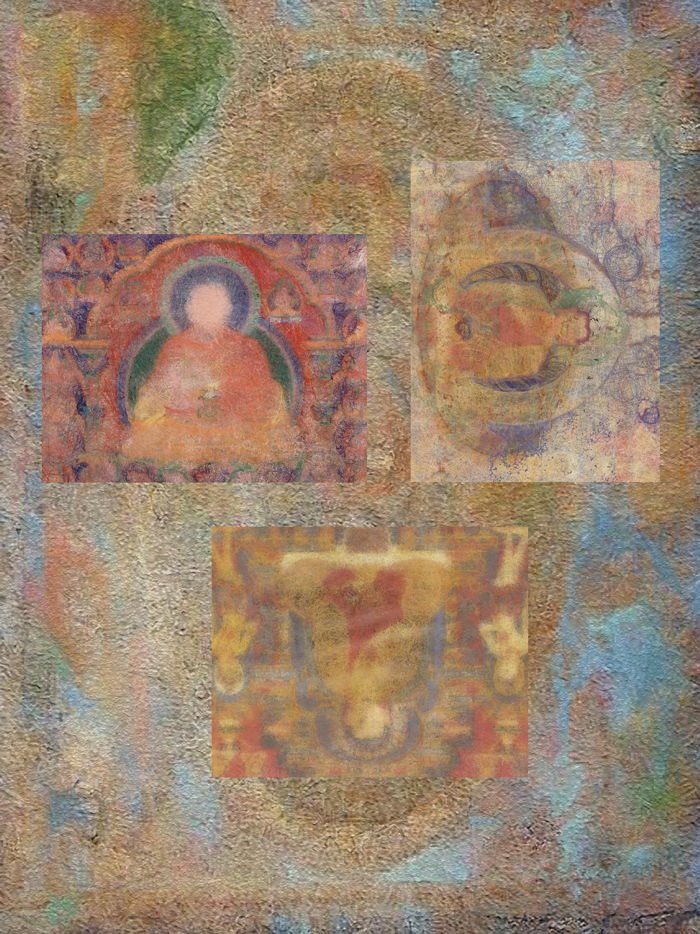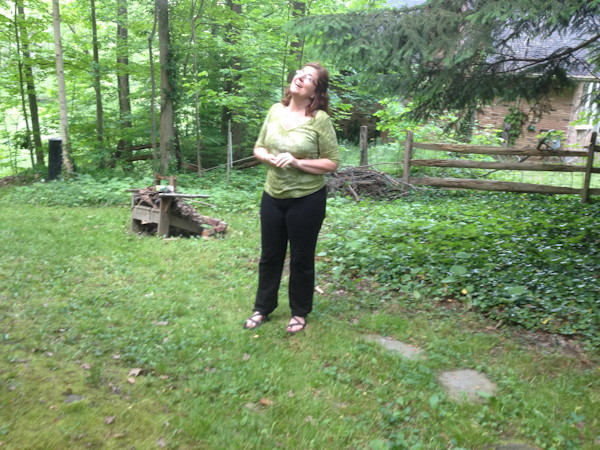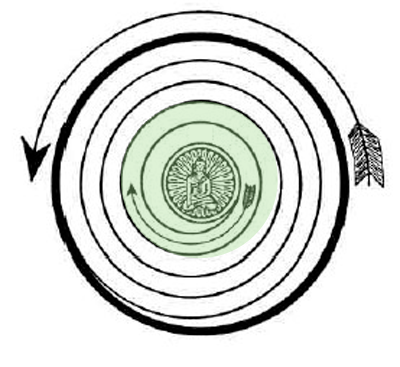SCalhoun, 2012, The Transcendent Function
The process of coming to terms with the unconscious is a true labor, a work which involves both action and suffering. It has been named the “transcendent function” because it represents a function based on real and “imaginary” or rational and irrational, data, thus bridging the yawning gulf between conscious and unconscious. It is a natural process, a manifestation of the energy that springs from the tension of opposites, and it consists in a series of fantasy occurrences which appear spontaneously in dreams and visions.
The natural process by which the opposites are united came to serve me as the model and basis for a method consisting essentially in this: everything that happens at the behest of nature, unconsciously and spontaneously, is deliberately summoned forth and integrated into our conscious mind and its outlook. Failure in many cases is due precisely to the fact that they lacked the mental and spiritual equipment to master the events taking place in them. (C.G. Jung; The Synthetic Or Constructive Method, Two Essays In Analytical Psychology, p.80)
In addition to inherent duality of Universe
There is also and always
An inherent threefoldedness and fourfoldedness
Of initial consciousness
And of all experience.
For in addition to (1) action, (2) reaction,
(3) resultant,
There is always (4) the a priori environment,
Within which the event occurs,
i.e., the at-first-nothingness around us
Of the child graduated from the womb,
Within which seeming nothingness (fourthness)
The inherently threefold
Local event took place.
R. Buckminster Fuller, Intuition, 1972, p. 14
Wandering Through Friendship
Many years ago, my three closest male friends were named Bob, Bob, and Chris. I met each of them in Middlebury Vermont sometime around 1976, after I had arrived in Middlebury to work the music desk at The Vermont Book Shop. As it happened, only one of the ‘Bobs’ was still living in the area when I departed in 1991. That is important because the bonds forged with the three men had everything to do with our mutual proximity, and, eventually, this proximity was attenuated and so became diminished.
As it turns out, over twenty years later, I know how to contact two of the three, yet I’ve lost touch with all three. One of the Bobs, about whom I will tell of momentarily, I didn’t stay connected with right from the moment he left Middlebury in the late-eighties. (Yeah, I should google him!) It was with Bob P. that I first enjoined a discussion about the nature of friendship. After all, we were friends. I forget how it came up and I forget what it was that we discussed, but I do remember having the discussion and also remember our agreeing on two elements: to be known by another is to, then, do the work of knowing one other.
For apart from inquiry, apart from the praxis, individuals cannot be truly human. Knowledge emerges only through invention and reinvention, through the restless, impatient, continuing, hopeful inquiry human beings pursue in the world, with the world, and with each other. Paulo Freire
Another consequential incident happened in 1992. I became friends with my boss, Patrick, and tis dovetailed in an absolutely synchronistic way with me working through unconscious images and the suggestions of Marion Woodman in her book The Pregnant Virgin. This book, for me personally, is the most profound book on masculine psychology. Paradoxically, its subject matter is feminine psychology, and yet its treatment of male friendship literally rapped me a little bit awake, like a Zen master might have done.
From that moment I became a close student of the nature of friendship. I made an experiential inquiry into my own friendships. Because it is my own mature nature to make a study of human phenomena as a participant and observer, eventually I organize my tentative comprehensions and modest understandings into my provisional knowledge of same–whichever subject is in my sight. So, it next becomes possible for me to know, and, articulate, my personal phenomenology and practice of friendship, and these are entangled in what amounts to an aesthetic of friendship.
By the way, I don’t lay any of this on my close friends, unless our collaboration in friendship happens to step back into this so-called “meta” viewpoint, stepping back at such a point into a dialog about that which comprises our different viewpoints (or aesthetic,) on the practice of friendship. This hasn’t happened betwixt my friends and me, and, paradoxically, I’m sharing this with anybody who happens upon this published description; including friends.
Friendship and a Colorful Symbol
One time it happened is when I explained to my close friend Holly that ‘to be a close friend of mine means for me to have entered the most close in circle of friendship and intimacy.’
Obviously this kind of differentiation is not uncommon–when you reflect upon your relationships. She and I discussed what this differently meant for us, being in relationships which could be qualified in terms of closeness and whether or not someone was, in both effect and practice, in our inner circle.
In noting this particular approach, a crucial point to understand is that feeling my way through a human phenomena like this is part and parcel of what I do just in being who I am to be. This point of fact goes along with two elemental aspects that qualify, for me, a friend being in my inner circle: one, such a person has put in the necessary time; two, such a person has mutually submitted to the actuality of each of us being who we happen to be.
The essence of marriage is friendship. The secret of life is friendship. The core of love is being a friend.



